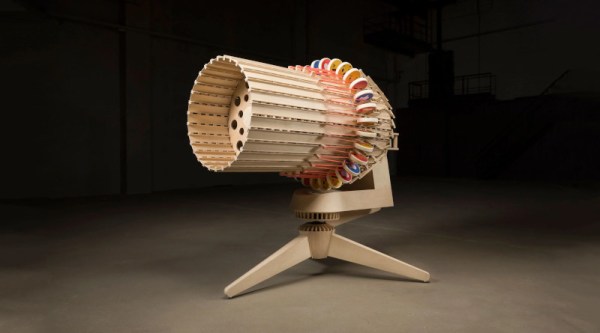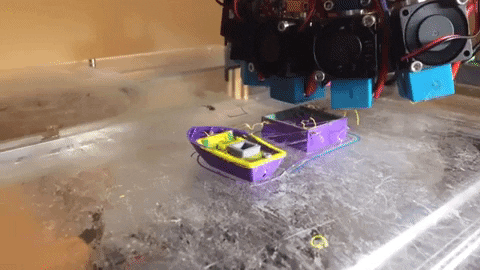Emojis, the graphical descendants of textual emoticons, are everywhere these days. They’re commonly used on social media platforms as a way of indicating a basic emotional response to a post. That wasn’t enough for [Tadas Maksimovas], who built the Emotigun to really get the point across.
Fundamentally, the Emotigun is akin to a Gatling cannon for small foam emojis. Firing over ten rounds per second, it’s built primarily out of wood, using Precise anti-cold rubber bands to fling its ammunition at targets. This was a practical choice, as the original Thera-Band green rubber tubes became inelastic in the cold temperatures of the testing environment. The finer details of the build are laid out in a document for those eager to know more.
The build was a team effort, with many pitching in, and even [Jorg Sprave] lending his expertise to the build. Given [Jorg]’s expertise, we’re not surprised the final result is so impressive. Reports are that filming the machine in action was quite an ordeal, with [Tadas] taking over 200 rounds to the face during the course of the shoot. Video after the break.















